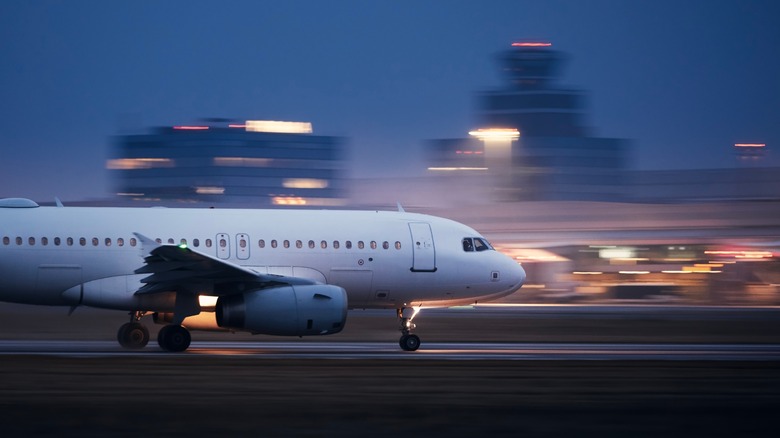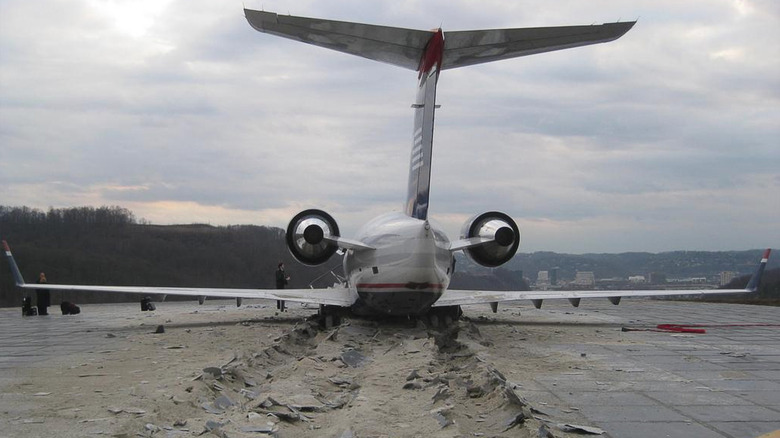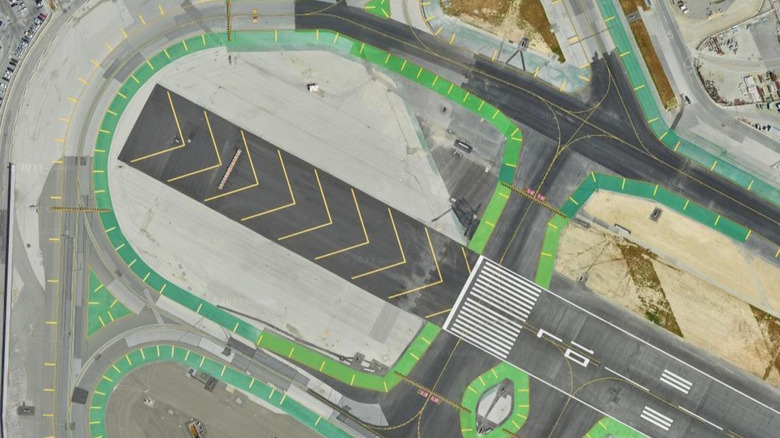How The Creation Of EMAS Made A Drastic Change To Airplane Safety
Fear of flying is a very common phobia, fed by the splashy news coverage that typically accompanies any air accident, however minor. But these days, flying is incredibly safe. In fact, in 2022, the accident rate was only one in ~830,000 flights. When it comes to fatal accidents, the statistics are even more reassuring – worldwide, out of 32.2 million flights in 2022, only five resulted in deaths.
If you can excuse the pun, air travel safety is no accident. For decades, airlines and government agencies have been doing everything they can to make flying safer, and year over year, the number of accidents has decreased as lessons are learned and modifications are made to both planes and crew training. Some flight safety innovations have entered the general lexicon — we're all familiar with the so-called "black boxes" that record flight data, for example, and countless in-flight briefings have drawn our attention to floor-level illumination, automatically-deploying escape slides, and the emergency oxygen supplies that drop from the airplane ceiling "in the unlikely event that..." etc.
But there's another innovation being rolled out at airports across the world that has the potential to make air travel even safer, and you've probably never heard of it. EMAS, which stands for "engineered materials arresting system," is a crushable runway surface designed to reduce the risk of serious accidents during the most dangerous phases of flight.
What is EMAS?
Very simply, EMAS is an "arrestor bed" positioned at both ends of a runway, which is stiff enough to be walked or driven on, but soft enough to crumble under the weight of a plane. Made of either crushable cellular cement or silica, covered with a thin "crust" of poured concrete, EMAS is designed to safely slow an airplane by bogging it down. Imagine the effect of speeding off a highway into a plowed field, and you'll get the idea. An EMAS arrestor bed can bring an airplane that leaves the runway at 80 miles per hour safely and quickly to a stop.
You might assume that the most dangerous part of a flight is when you're cruising at altitude, miles above the earth. But in fact, most airplane accidents happen close to the ground, either during takeoff or landing. Although the takeoff phase only accounts for a fraction of an average flight time, it's where 14% of fatal accidents occur. The final approach and landing phase is (statistically) even more dangerous, accounting for 49% of fatal accidents (based on data from 2008-2017).
There are many reasons for this, which include the risk of engine failure before the plane has built up enough speed to get safely airborne, the danger of bird strikes, and wet or icy runways, which might cause a plane to skid on landing. In each of those eventualities, adding additional space at the ends of runways provides a valuable safety margin. In fact, runway safety area (RSA) standards were put in place in the 1980s, specifically for this reason. But not every airport has the luxury of extending its runways by the recommended distance. For passengers flying from those airports, EMAS might make the difference between life and death.
EMAS rollout around the world
EMAS was first introduced at New York's John F Kennedy Airport in 1996, and since then, it has been installed at 69 airports in the US, and many more worldwide. It's especially useful at airports with short runways that end in dangerous natural features, like hills, valleys, or the ocean. Roland Garros Airport is one of them. Located in Saint-Marie, on the French island of Réunion, the airport's runways could not be safely extended, so in 2017, EMAS was installed to reduce the risks of planes overshooting and ending up in the sea.
According to the FAA, since it was first installed at JFK back in the 90s, there have been 20 incidents involving 18 airplanes, where EMAS has been credited with safely bringing the airplane to a stop. These include a Boeing 737 carrying then Vice-Presidential candidate Mike Pence, which skidded off the runway in wet conditions at La Guardia airport in 2016 and was safely stopped by EMAS. After an accident involving EMAS, the runway can be returned to operation within just a few hours, and the damaged portions of the arrestor bed can be replaced easily and cheaply without re-installing the entire system.
As a passenger, you likely wouldn't notice an EMAS arrestor pad if you didn't know exactly what you were looking for. If you get on Google Earth, though, and find one of the airports with EMAS installed, you might notice that the runways have dark-colored extensions at either end, with bright arrows painted on them. That's EMAS, and it might save your life one day.


